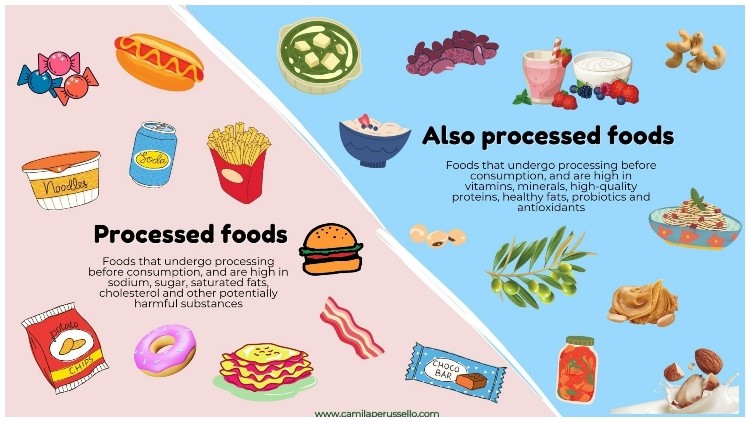Defusing the ticking time bomb called diabetes
Processed foods are food products that have undergone various methods of preparation, preservation, or alteration before reaching consumers. These methods can include cooking, canning, freezing, drying, and the addition of various ingredients for flavor, texture, and shelf-life extension. Processed foods exist on a spectrum, from minimally processed items like bagged spinach or roasted nuts to highly processed foods like sugary snacks and frozen pizzas.

Here are some key points about processed foods:
Types of Processing:
-
- Minimally Processed Foods: These are foods that have undergone minimal processing and typically contain few, if any, added ingredients. Examples include fresh fruits and vegetables, whole grains, and lean cuts of meat.
- Moderately Processed Foods: These foods have undergone some processing but still retain much of their original nutritional value. Examples include canned vegetables, pasta, and yogurt.
- Highly Processed Foods: These foods have usually undergone extensive processing, often containing additives, preservatives, and artificial ingredients. Examples include sugary cereals, fast food, and packaged snacks.
- According to the World Health Organization, a major reason for this is the consumption of unhealthy ultra-processed foods and beverages, which are aggressively marketed displacing traditional diets.
- Such food includes carbonated drinks, instant cereals, chips, fruit-flavoured drinks, instant noodles, cookies, ice cream, bakery products, energy bars, sweetened yogurts, pizzas, processed meat products, and powdered infant formulas.
- A 10% increase in the consumption of ultra-processed food a day is associated with a 15% higher risk of type-2 diabetes among adults.
- When food is ultra-processed, its structure is destroyed and cosmetic additives, colours, and flavours are added.
- The processing of foods is a complex industry with various challenges that must be addressed to ensure the production of safe, high-quality, and nutritious food products
- Ensuring the safety of processed foods is paramount. Contamination by pathogens, allergens, or chemical hazards during processing can lead to foodborne illnesses. Maintaining strict hygiene standards, implementing effective sanitation practices, and regular testing are essential to mitigate these risks.
- Efficient supply chain management is vital for timely access to ingredients and the distribution of finished products. Delays, disruptions, or inefficiencies in the supply chain can affect production schedules and product availability
- Companies involved in international trade must navigate trade regulations, tariffs, and import/export requirements, which can be complex and subject to change.
- The result is a deepening public health crisis, the ticking time bomb of diabetes. Sugar-sweetened beverages are a major source of added sugar in diets and put people at a higher risk of type 2 diabetes. In such a context, policy and regulatory actions are warranted
|
Practice Mains Questions
1.The processed food industry plays a significant role in the Indian economy. Discuss the challenges and opportunities in the sector, and highlight the implications of processed foods on public health and nutrition
2.Food processing can be a potential driver for agricultural growth and employment generation in India. Examine the strategies and policies required to promote food processing industries, with a focus on enhancing farmers' income
3.Food safety and quality standards are critical for the processed food industry. Evaluate the existing regulatory framework for food safety in India and suggest reforms needed to ensure the production and distribution of safe and quality processed foods
|




